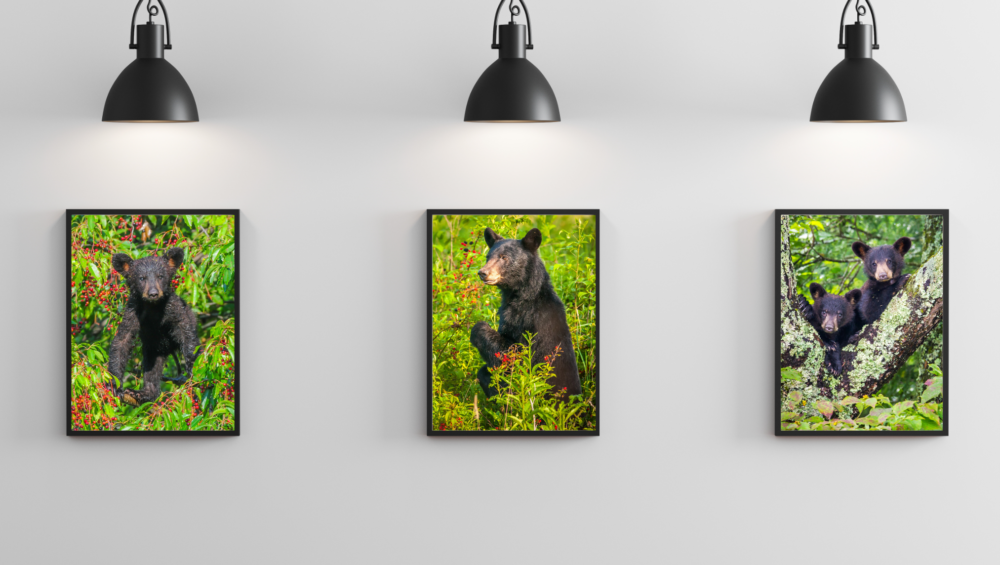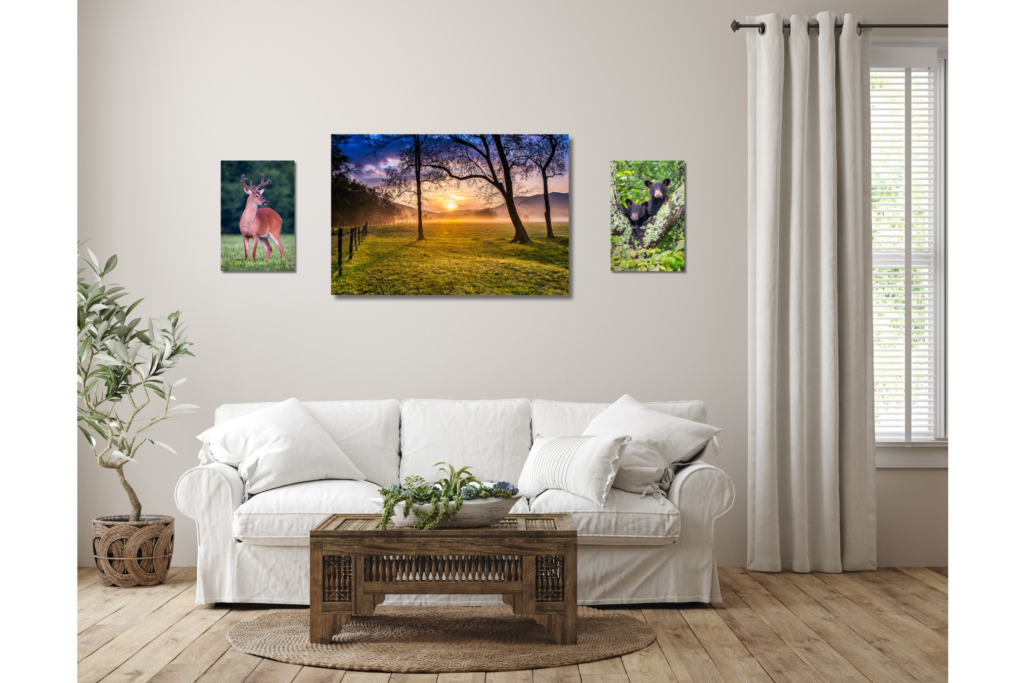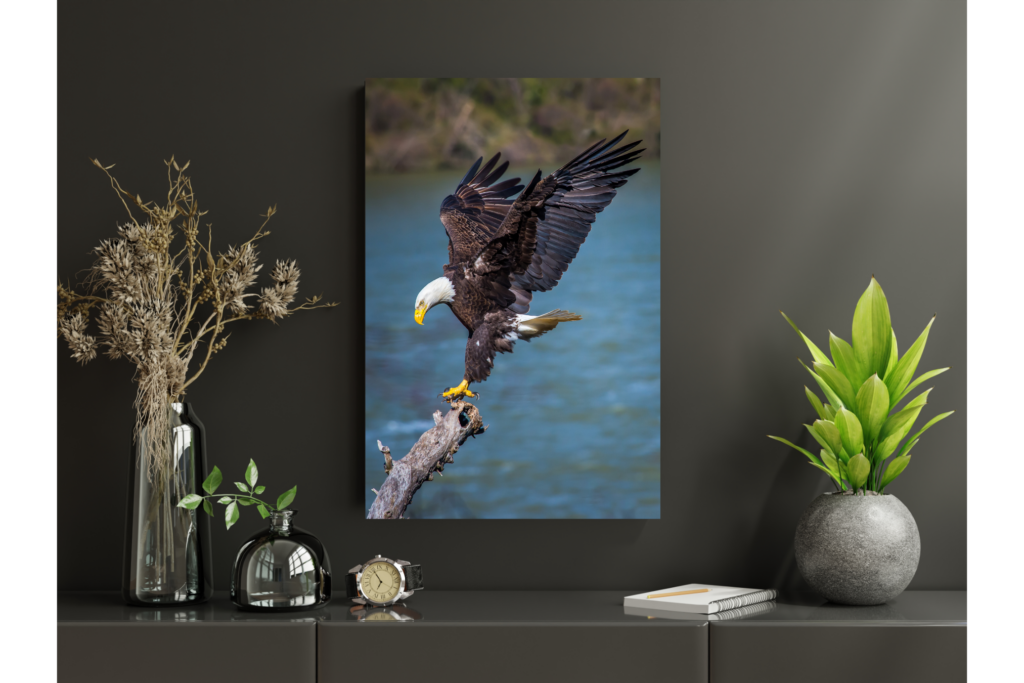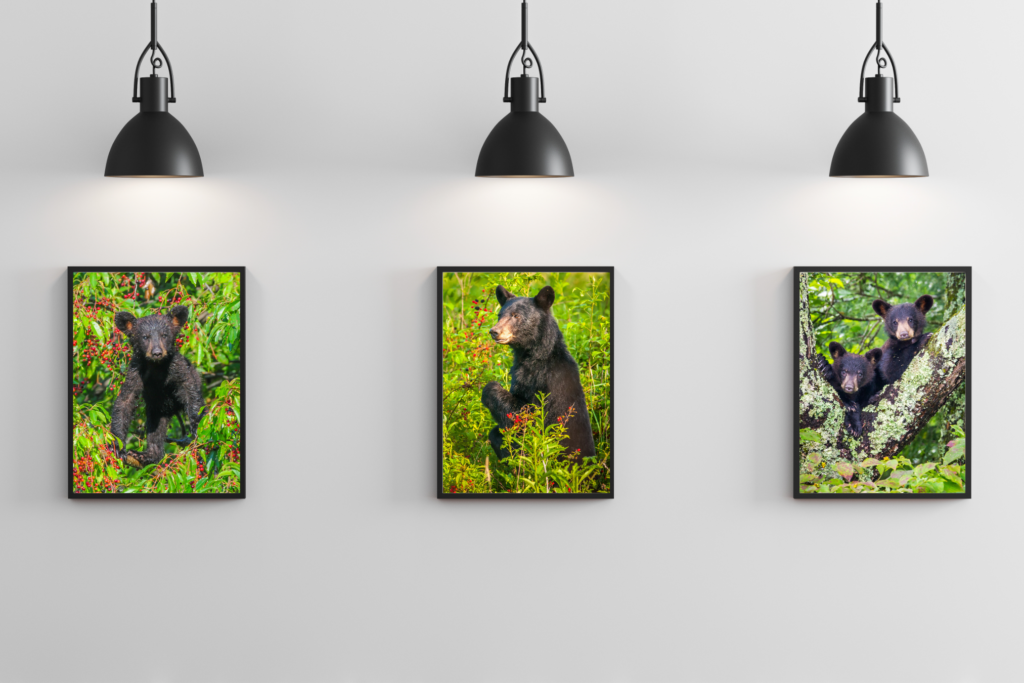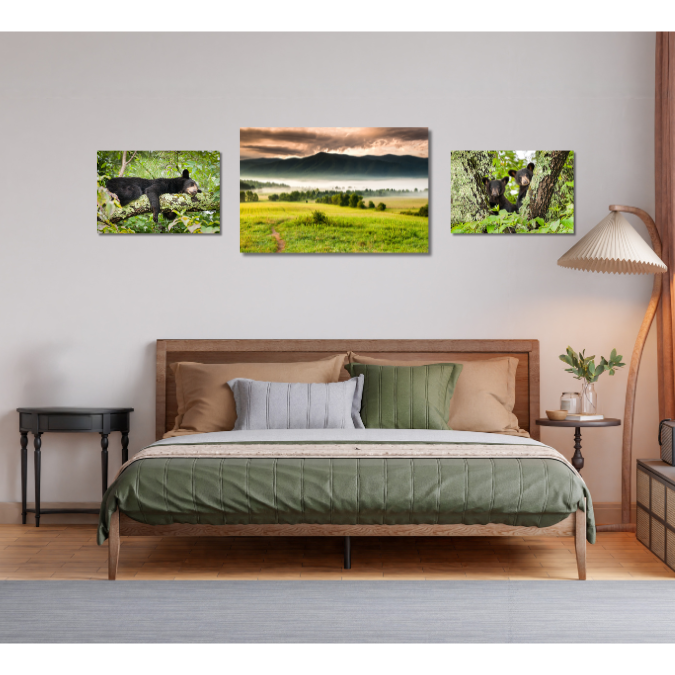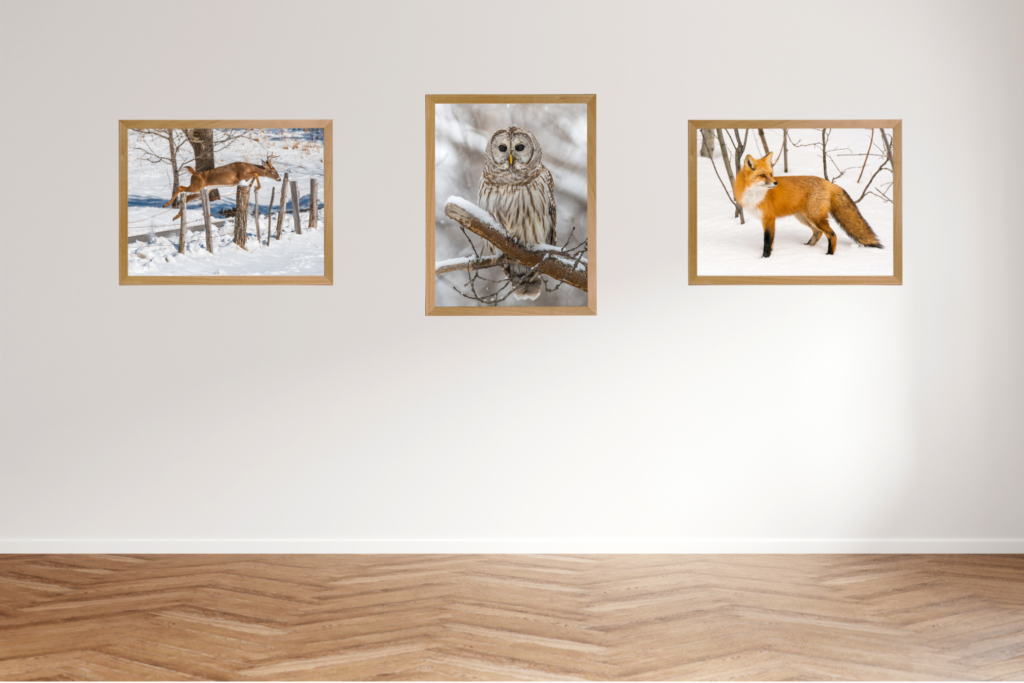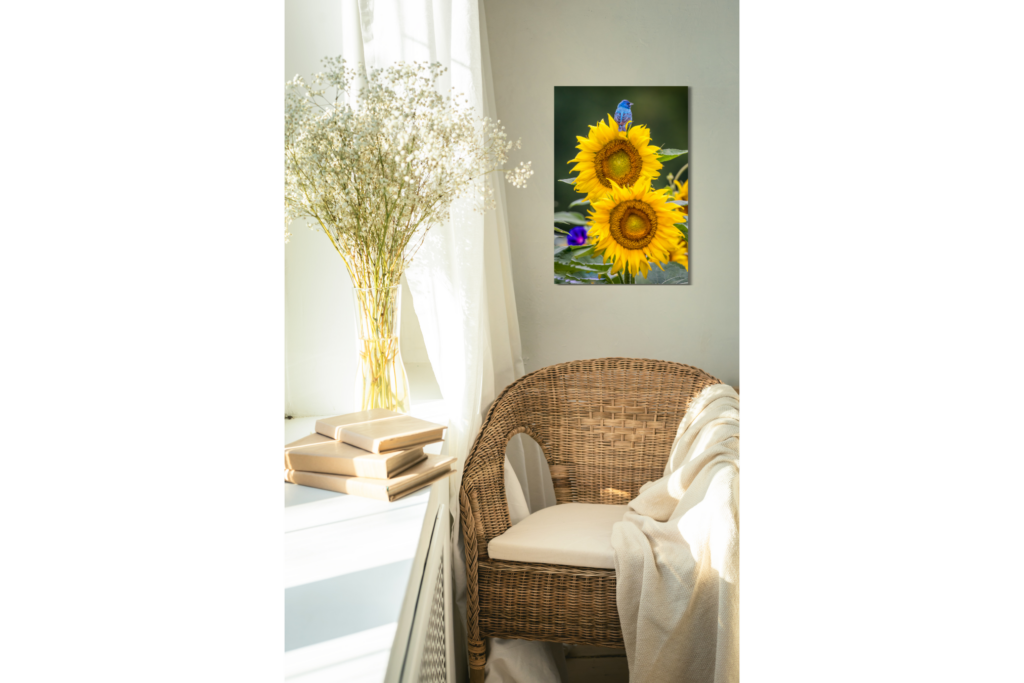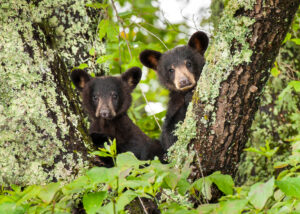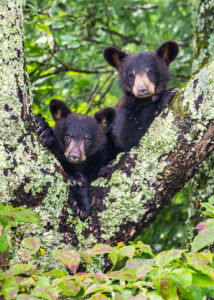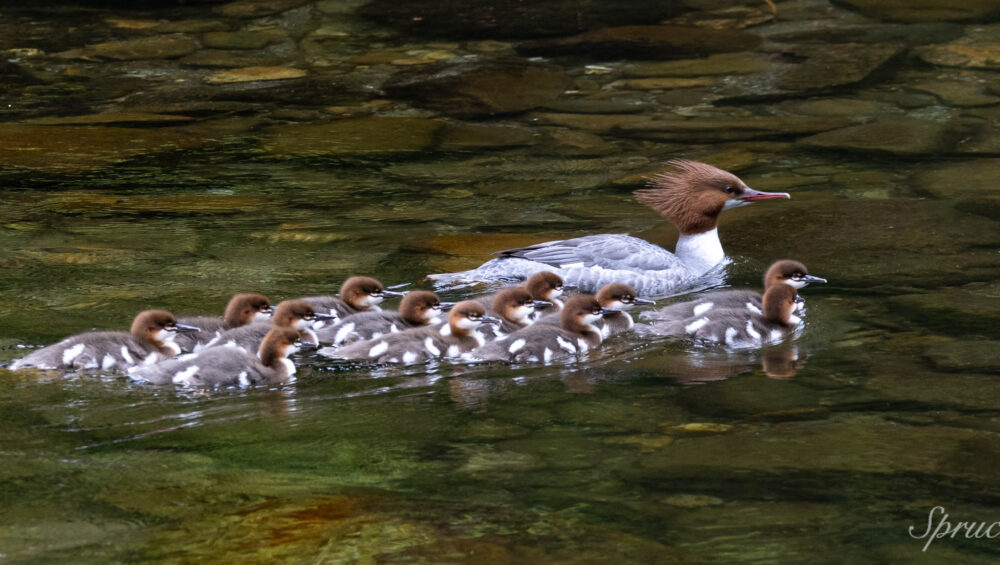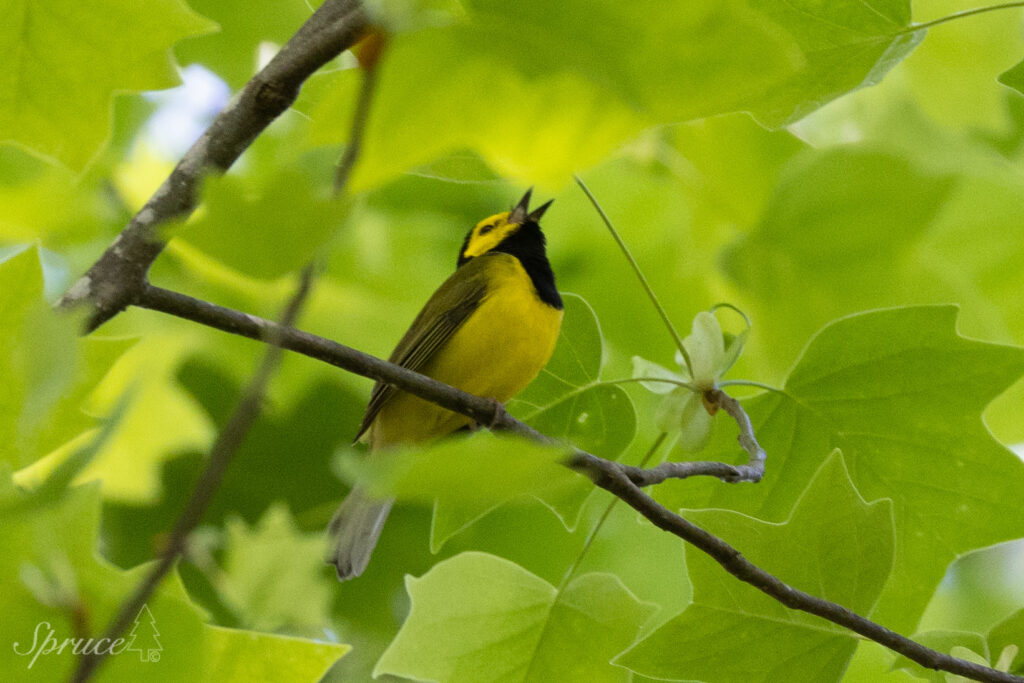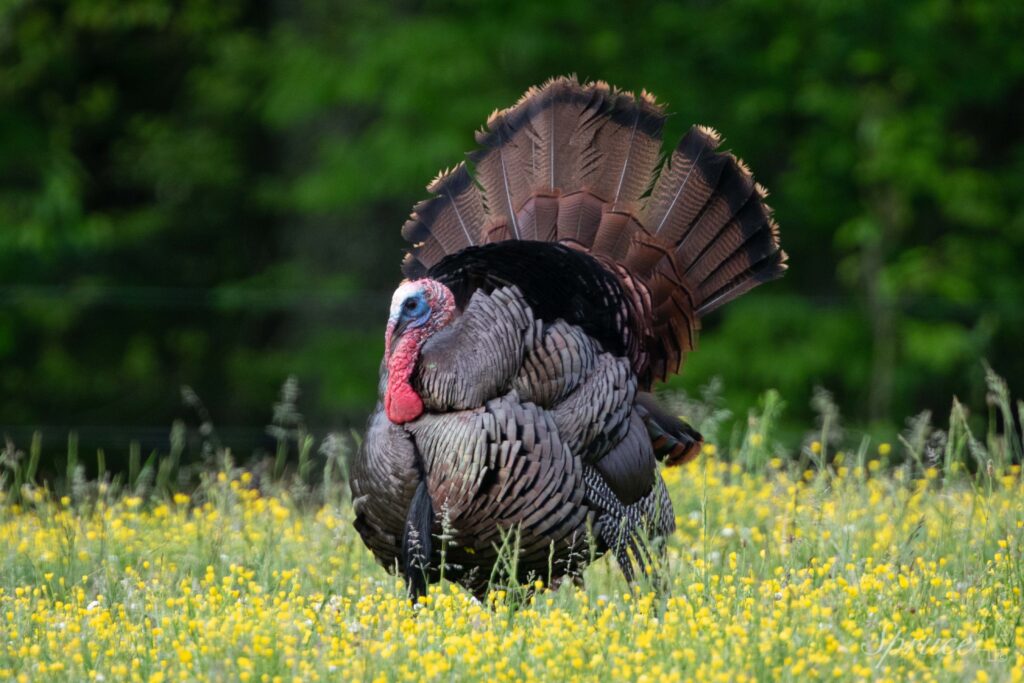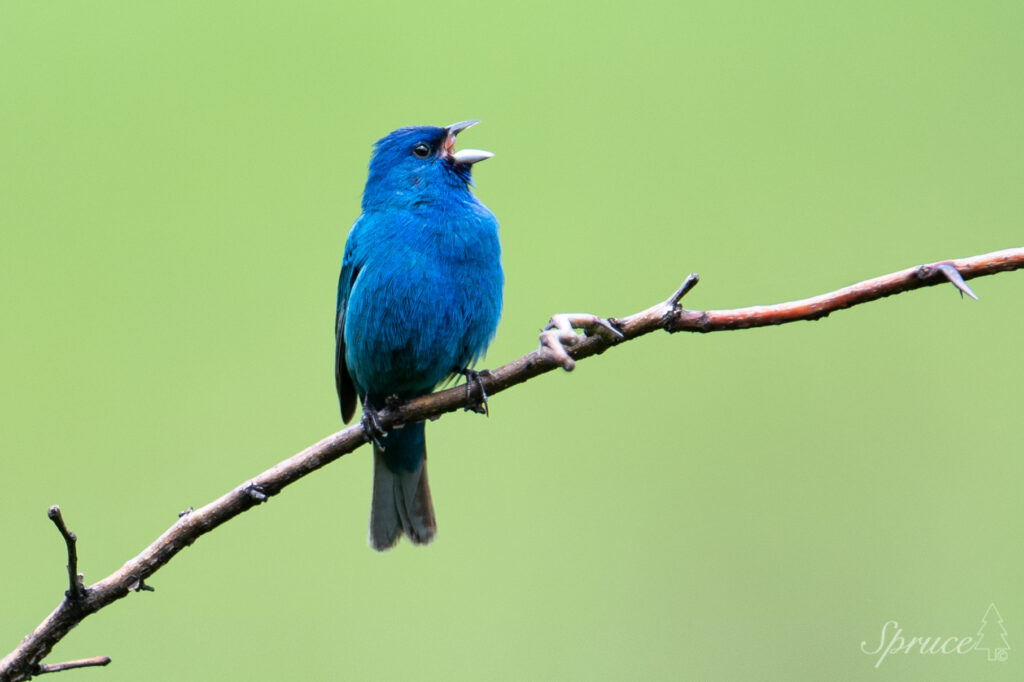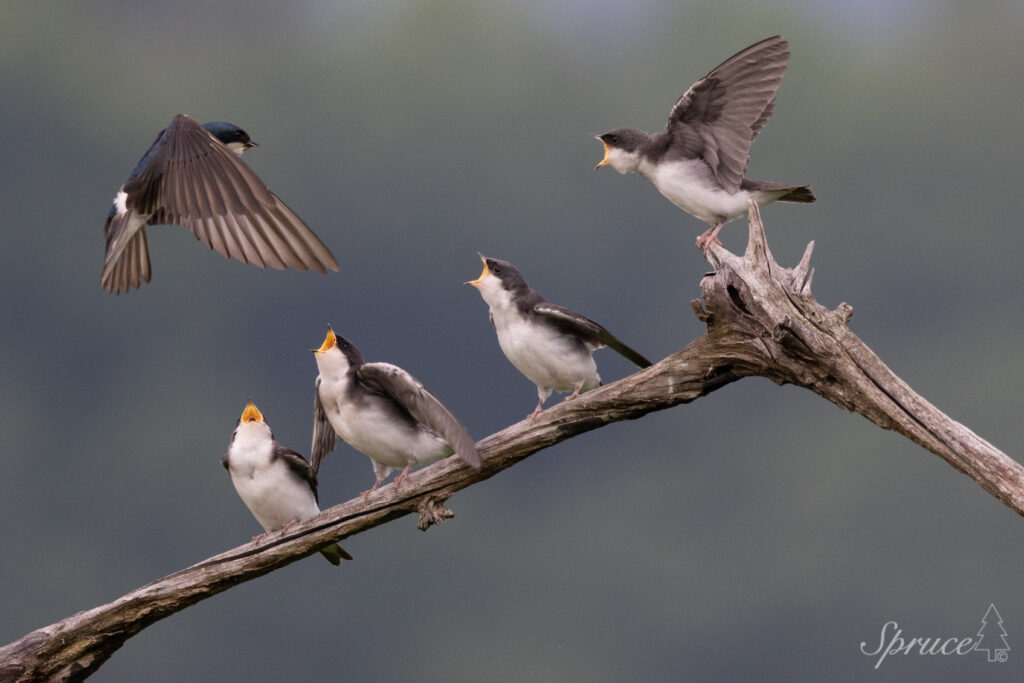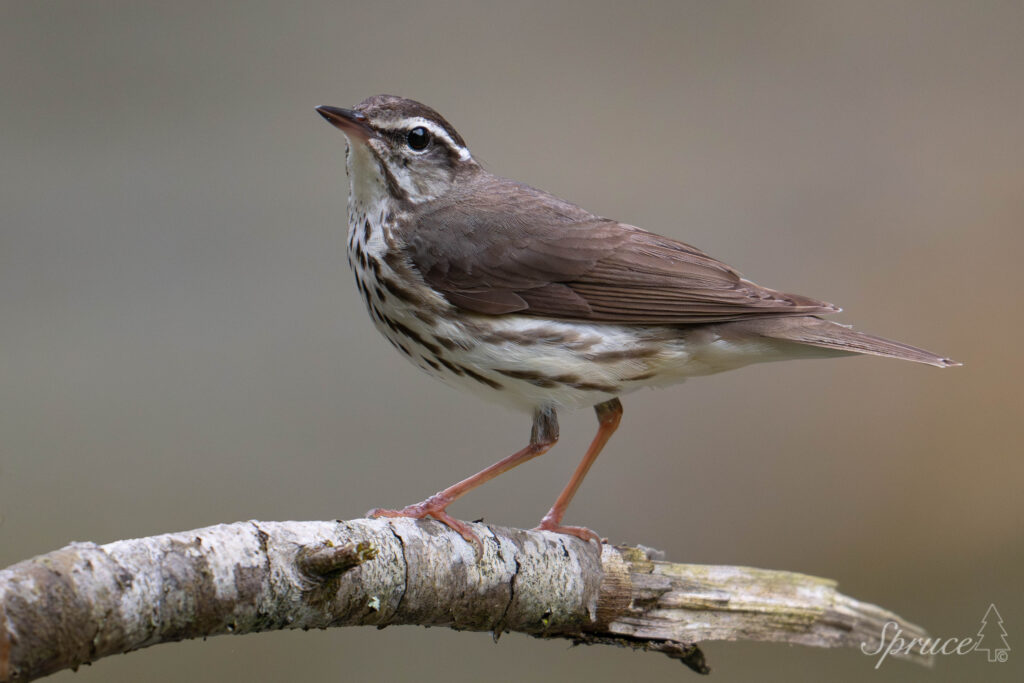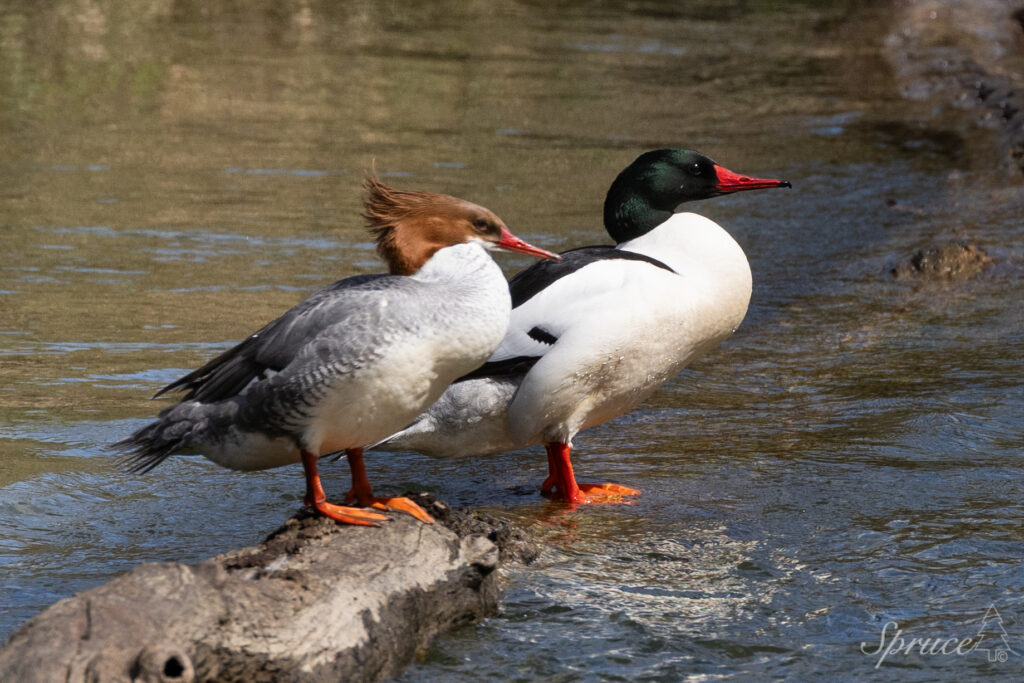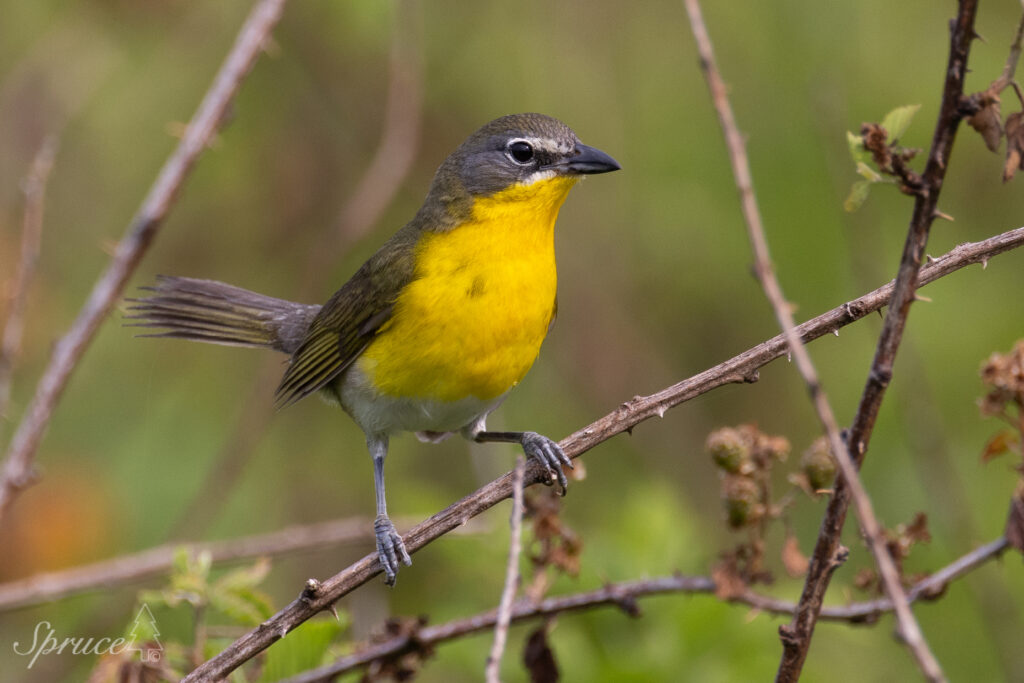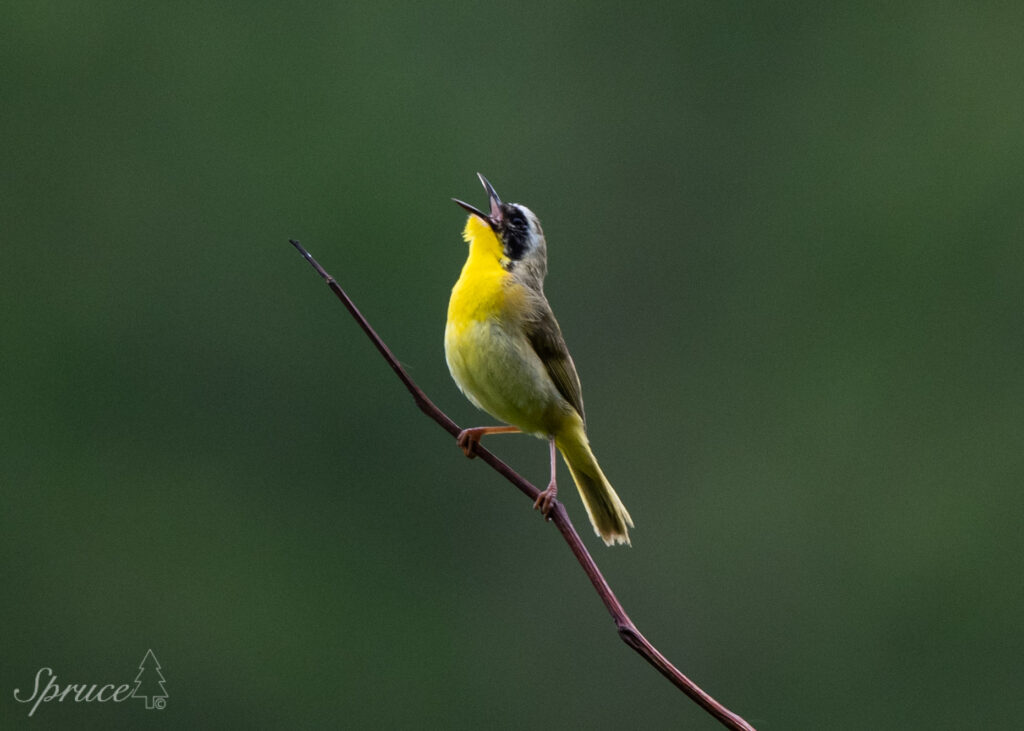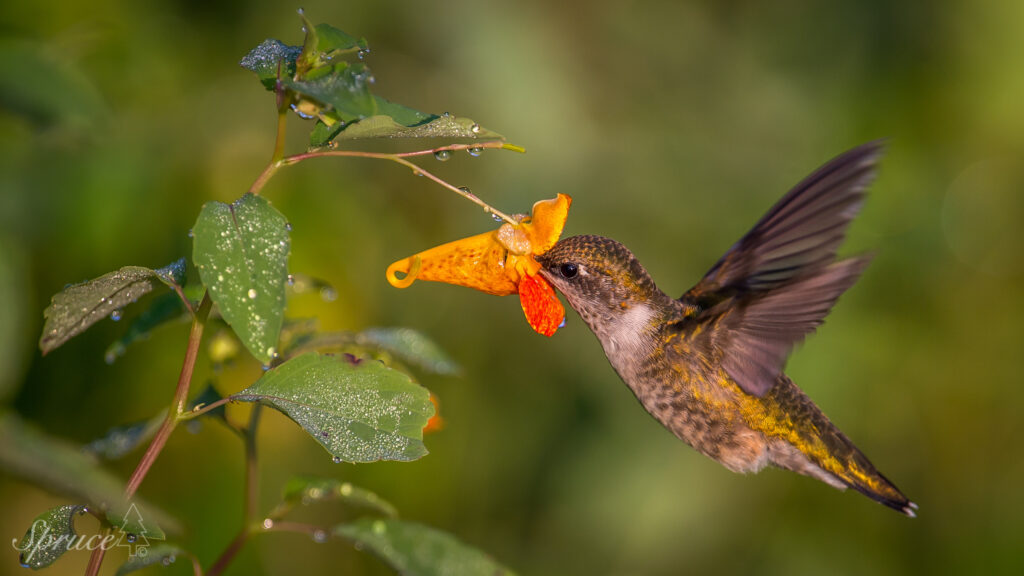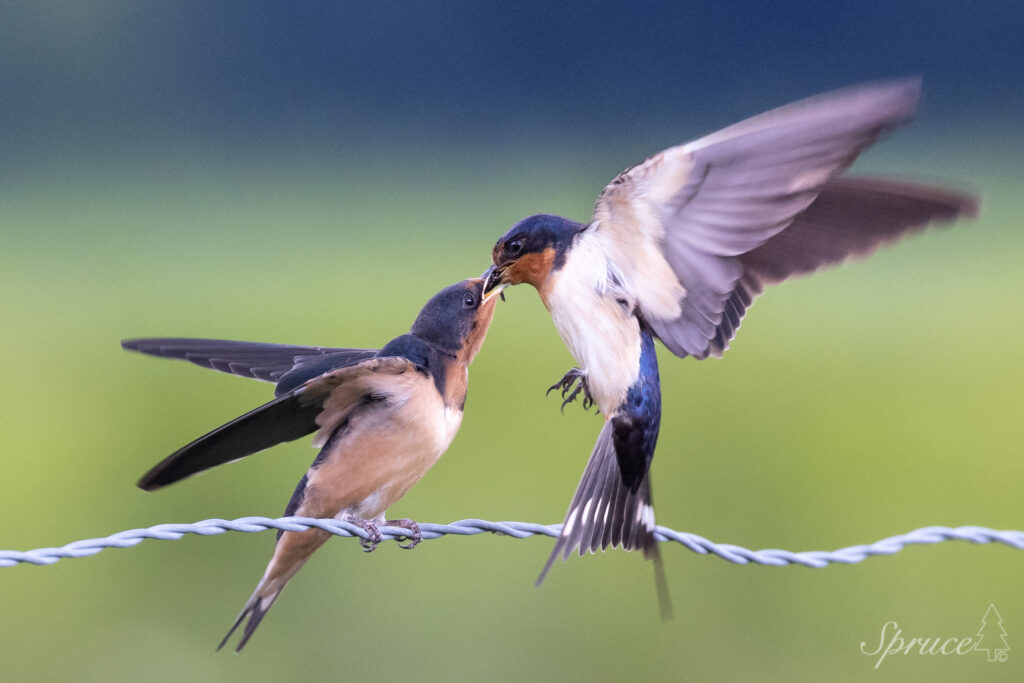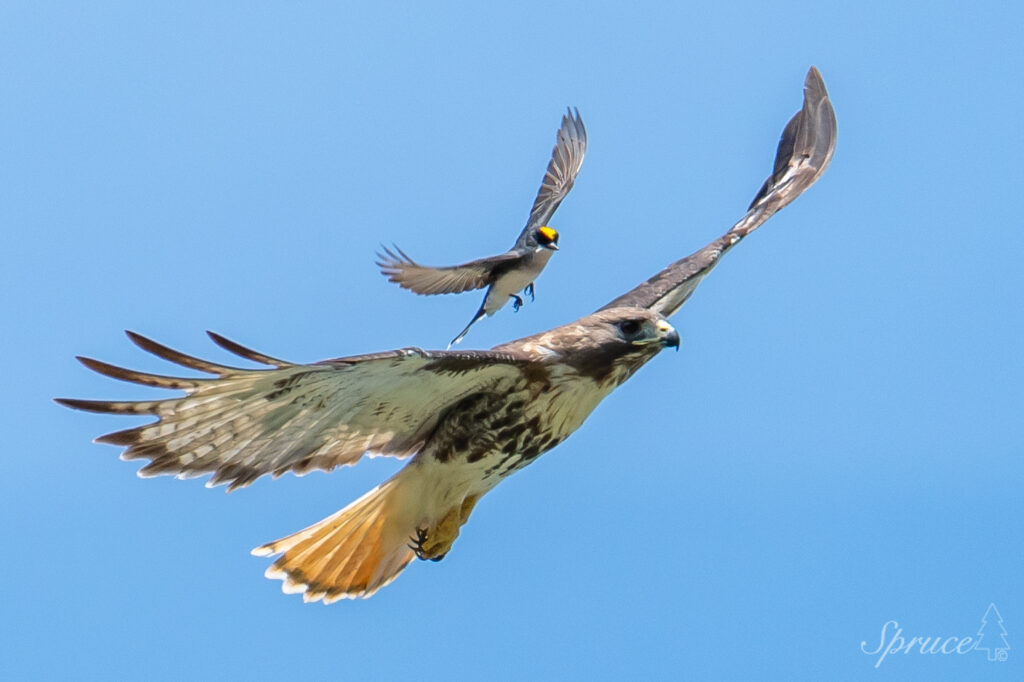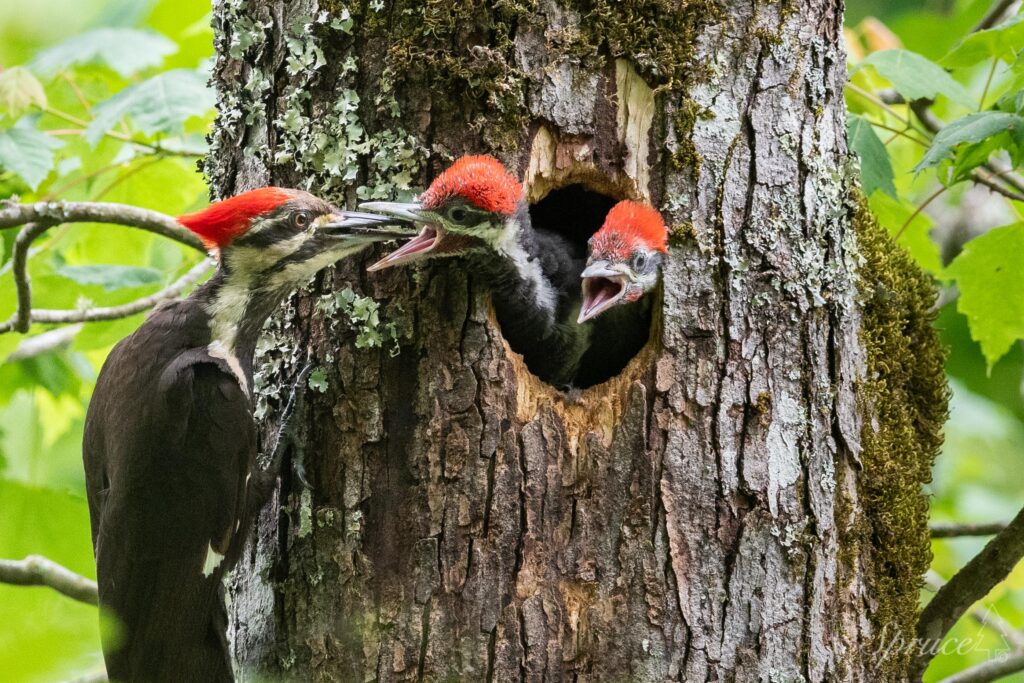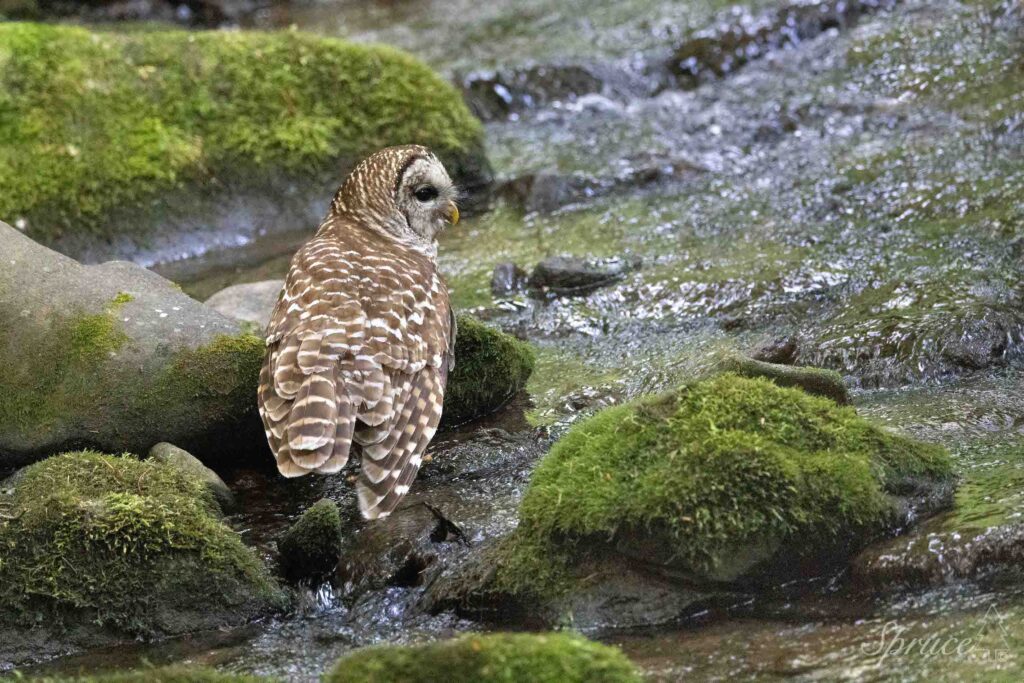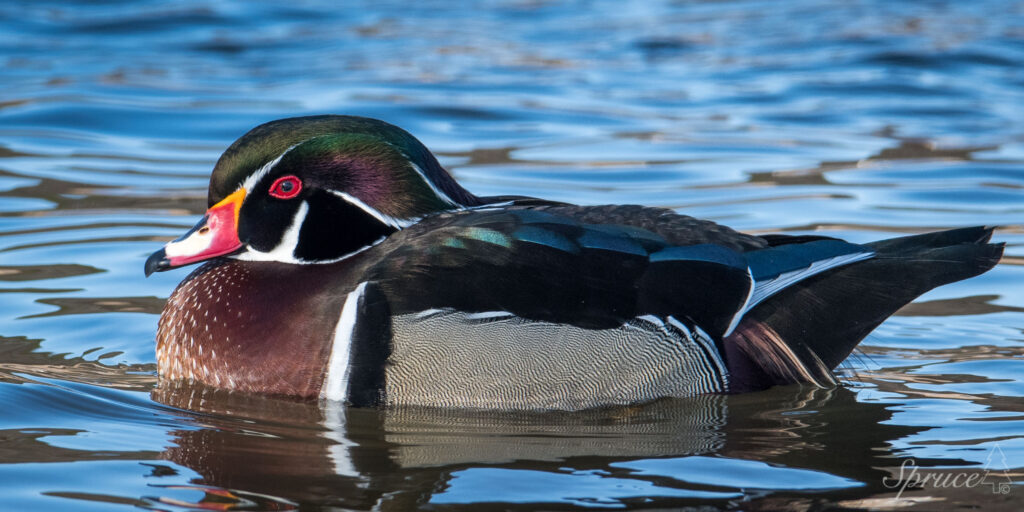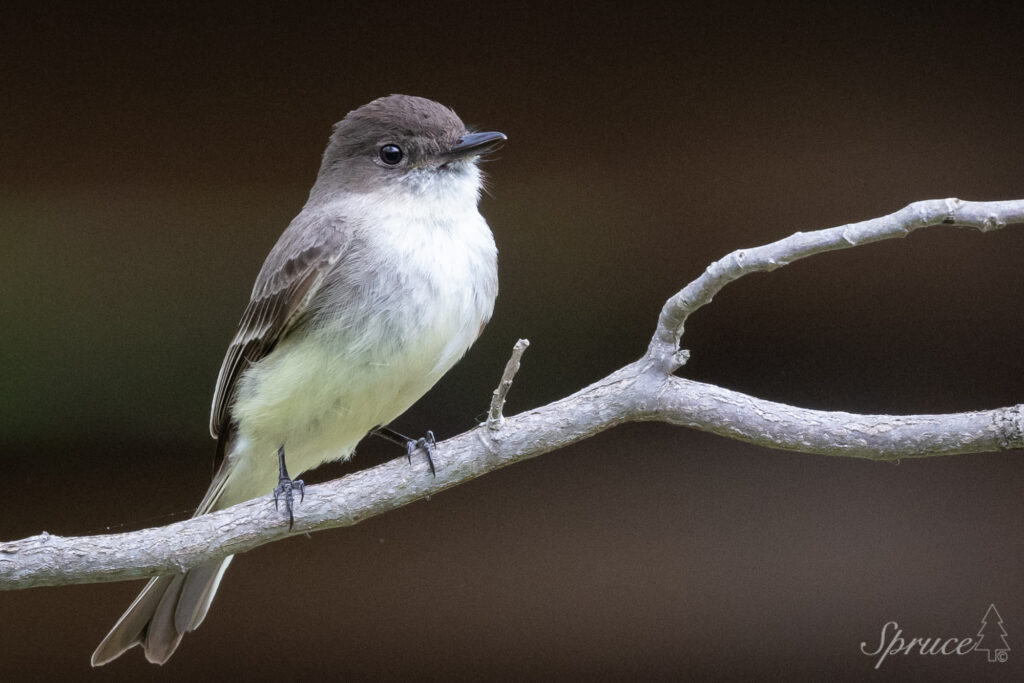For nature lovers and photography enthusiasts, decorating your home with stunning landscape prints of the Smoky Mountains is a natural choice. The rolling peaks, misty valleys, and vibrant sunrises captured in these images bring a sense of peace and timeless beauty to any space. But what about those smaller corners, accent walls, or cozy nooks that need a little extra charm? Or that landscape centerpiece that needs complementary pictures? That’s where wildlife prints come in—perfect companions to your landscapes. Think of an adorable black bear cub in a tree, your favorite owl perched on a branch, or a graceful deer in a meadow—these smaller-scale prints can tie your love for the Smokies into every room of your home.
Why Wildlife Prints Work with Landscape Photography
Wildlife prints are more than just decorative fillers; they tell a story. Pairing a Smoky Mountain vista with a close-up of a mammal or a favorite bird creates a cohesive narrative. The landscapes set the scene, while the wildlife brings it to life, reflecting the vibrant ecosystem. For those who find joy in the sights of birds, bears, deer, and other wildlife, these prints offer a way to showcase your favorite creatures in a sophisticated style.
Smaller wildlife prints are ideal for filling spaces where a large landscape might overwhelm—like above a side table, in a hallway, or as part of a gallery wall. Their scale allows for flexibility, letting you mix and match species and scenes to suit your taste. Imagine a metal print of a foggy Cades Cove morning as the centerpiece over your living room couch, flanked by smaller metal prints of bear cubs and a whitetail deer. The result? A balanced, nature-inspired look.
The Magic of Metal Prints: Float Mounts and Beyond
When it comes to displaying your wildlife and landscape photography, metal prints offer a modern, sleek solution. At our online store, we specialize in two standout options: metal prints with float mounts and standalone metal prints. Both bring unique advantages to your decor, especially for those seeking a polished, ready-to-display look without the fuss of traditional framing.
Metal Prints with Float Mounts
Our metal prints with float mounts are a game-changer for effortless elegance. These prints are infused directly onto a lightweight aluminum sheet that has a white base coat. They are finished with a float mount on the back, meaning they arrive ready to hang straight out of the box. No mat, no frame, no hassle. The float mount creates a subtle shadow effect, making the print appear to hover off the wall, adding depth and a contemporary flair to your space. This option is perfect for a bold wildlife shot like a bald eagle where the vivid colors and fine details pop against the metallic surface. Plus, the larger image area (no mat or frame to shrink the picture) ensures your favorite wildlife takes center stage.
Standalone Metal Prints
If you prefer a bit more customization, our standalone metal prints are just as impressive. These glossy, durable prints can be easily slipped into a simple frame of your choosing—no glass or mat required. The lack of glass eliminates distortion, letting the full depth and clarity of the image shine through uninterrupted. Like their float-mounted counterparts, standalone metal prints offer a larger image size compared to traditional matted prints, maximizing the impact of every detail. They’re a great choice for smaller wildlife images you want to frame and cluster together, creating a dynamic display that complements your larger landscapes.
Benefits of Metal Prints Over Traditional Options
Why choose metal over classic paper prints with mats and frames? For starters, metal prints are built to last. The aluminum surface resists fading, moisture, and wear—perfect for homes where nature-inspired decor needs to stand the test of time. The absence of glass means no worrying about distortion or breakage, and the clean, frameless look feels fresh and modern.
The larger image size is another major perk. Traditional prints often lose valuable space to mats and frames, shrinking the artwork itself. With metal prints, you get more of what you love—whether it’s the mysterious eyes of an owl or the expanse of a Smoky Mountain sunrise. This makes them especially striking for wildlife shots, where every detail counts, and for landscapes, where the full scope of the scene can breathe.
Inspiration for Your Space
Picture this: In your bedroom, a metal print of a Cades Cove foggy morning brightening the space above your bed. Smaller float-mounted metal prints of a sleeping mother bear and her curious cubs flank each side completing the story of your Smoky Mountains.
These wildlife accents don’t just fill gaps—they elevate your decor, making it feel intentional and alive. They’re conversation starters, too, perfect for when guests who share your love of the Smokies visit.
Bring the Smokies Home
Incorporating wildlife prints into your home decor is a celebration of the natural world you adore. Whether you opt for the ready-to-hang float-mount or the flexibility of the standalone metal print, you’re choosing a durable, vibrant way to showcase the wildlife you enjoy. Pair them with your favorite landscape photography, and you’ve got a design scheme that’s as timeless as the wilderness itself.
Ready to transform your space? Explore our collection of Smoky Mountain wildlife and landscape metal prints today, and let the beauty of nature find its place in your home.
Learn More and Join Us in the Smoky Mountains
Want to learn more about the amazing life cycle of American Black Bears in the Smoky Mountains? Read our latest blog “The Fascinating Lives of American Black Bears” on our Spruce Photo Tours website.
Interested in photographing black bears with an experienced local photographer and guide? Join our Smoky Mountain Black Bear Workshop in May or book a private guided tour for an unforgettable one-on-one experience.
